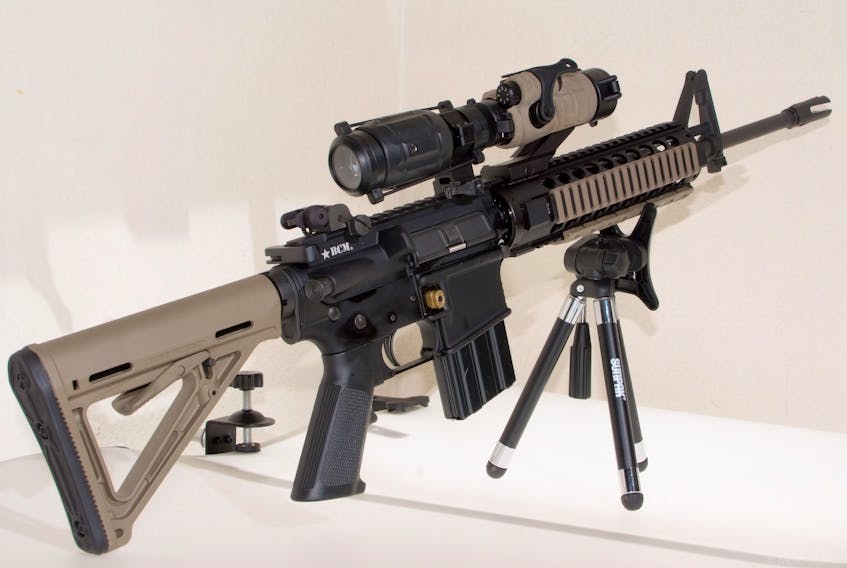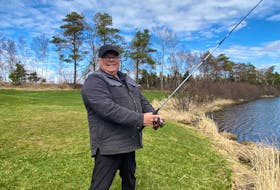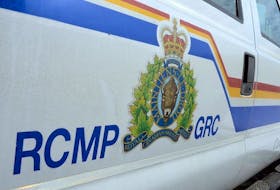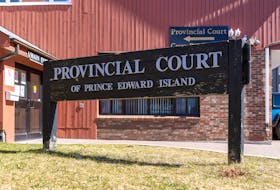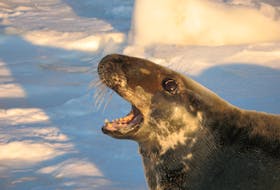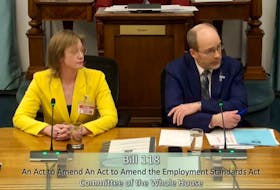While many are celebrating the federal government's sweeping ban of assault rifles after the worst mass shooting in Canadian history, others are calling the ban hasty and say it does little to stop violent criminals and instead targets law-abiding gun owners.

Wendy Cukier, a professor at Ryerson University, co-author of “The Global Gun Epidemic: From Saturday Night Specials to AK-47s” and president of the Coalition for Gun Control, said the ban on assault rifles has been long promised by Liberal governments and should come as a surprise to no one.
“The most important thing to understand is gun violence is like cancer,” Cukier said. “There are different forms. And so when I read that someone says, ‘banning assault weapons is a bad idea because it doesn't affect smuggling,’ it's like saying, ‘curing breast cancer is a bad idea because it doesn't cure lung cancer.’”
Cukier said there is plenty of evidence to show that where these types of guns are allowed, there is increased risk that people will use them to do what they were designed to do, which is to shoot as many people as possible in as short a time as possible, as has been the case in a number of shootings in Canada and other countries.
“Most countries do not allow civilians to legally own assault weapons,” she said. “And most countries in the world do not see the number of mass shootings that we see south of the border.”
Cukier said that while the assault weapon ban is a good first step, a ban on handguns and stricter controls on other types of weapons are also needed in Canada, as they are frequently used in violent incidents, especially during domestic violence.
“Handguns are not used in hunting. Handguns are not used by farmers. Handguns are used by target shooters and collectors. And frankly, most Canadians agree that the risk outweighs the utility. We're sorry that some people enjoy target shooting. It's a nice hobby, but it's not worth putting our children's lives at risk,” she said.
Support strong as gun laws 'eroded'

A number of recent polls show widespread support for stricter gun laws in Canada. One from Angus Reid last week shows 78 per cent of Canadians want a ban of assault-style weapons like those banned last Friday, and two in three support banning handguns.
Cukier says Canadians have a false sense of security about current gun laws in Canada.
She said over the last decade the strength of gun laws in Canada has been eroded.
“We have fewer controls today over the sale of rifles and shotguns, for instance, than we did in 1977,” she said.
“Most (Canadians) don’t know that New York state has better controls over the sale of rifles and shotguns than we do. And they don't know that compared to European countries or Australia or New Zealand, we're very far behind where we once were if we want Canada to be a leader in terms of the strength of its gun laws.”
Addressing violence
As most of you know, this past Friday the federal government made sweeping changes via order in council with regards to...
Posted by St. John's Rod & Gun Club on Tuesday, May 5, 2020
Gerry Carr, a firearms advocate and member of the St. John’s Rod & Gun Club, doesn’t own any of the varieties of newly prohibited firearms, but he hunts and is involved in sport shooting.
While other gun advocates might disagree with him, he said, he is in favour of the gun laws that exist in Canada — or was until last Friday.
“There is a gun violence problem, that's clear,” Carr said.
“I think firearms do need to be controlled and licensed. … It makes it safer. It includes required training that covers a whole lot of things that are, in my mind, essential.”
But a sweeping ban on guns that are, for the most part, obtained and used legally is unfair, Carr said.
“I think it's opportunistic and it’s virtually meaningless with regard to having any kind of effect on public safety,” he said.
Carr says the answer is in better screening and checks, better laws to keep guns out of the hands of criminals and a larger crackdown on illegal weapons crossing the border into Canada.
The federal government has promised, in addition to the ban, to introduce “red flags laws” to keep guns out of the hands of people who could use them for harm, and additional laws targeting gun trafficking and smuggling.
Carr also takes issue with the government’s statement that there is no legitimate civilian use for these banned weapons — especially when, in the same breath, it offers an exception for those who use them for hunting. Others are favourites among gun hobbyists for use in various sports and at the range.
“These are very well-made firearms and they're very accurate. People like to use them. They're very adjustable in an ergonomic way, whereas a lot of hunting firearms, they're very difficult to adjust for your size, for the way you shoot. These do have sports shooting value and uses.”
There is already some effort to start petitions, and Carr said he suspects there will be court challenges.
“This will become an election issue, I'm sure. And there's no way to tell which way that's going to go,” he said.
Coherence needed
While the gun ban targets what the government describes as “military-style assault weapons,” lawmakers used three main criteria in deciding which models and types would be included: semi-automatic action with sustained rapid-fire capability (tactical/military design with large magazine capacity); modern design; and being present in large volumes in the Canadian market. The ban also includes sniper rifles and grenade launchers.
Fully automatic weapons — such as the AK-47, where the gun continues to fire as long as the trigger is pulled — have long been banned in Canada.
Semi-automatic weapons are fed by a magazine (most limited to five rounds) and fire once per trigger-pull, but without the need to do anything between each shot, which differs from other kinds of firing mechanisms, such as bolt-action rifles.

Blake Brown, a history professor at Saint Mary’s University and author of “Arming and Disarming: A History of Gun Control in Canada,” said many of these weapons didn’t enter the Canadian market until the 1970s and didn’t become popular until the 1990s.
“When these guns first came on the market in the 1970s, almost immediately the Canadian Association of Chiefs of Police started saying we need to be careful,” Brown said.
This isn’t the first attempt at regulating these weapons, Brown said.
While some of the newly prohibited weapons were unrestricted, meaning they could be used for hunting, most were restricted, meaning they could only be used at a shooting range and under specific regulations.
One of the banned weapons, the Ruger Mini-14, was until last Friday unrestricted, and Brown points out it is used by some people for hunting. (It was also the weapon used in the Ecole Polytechnique massacre in Montreal in 1989.) Not all the guns that were banned have what could be considered a modern design — the M-14, for example, is an American military weapon designed in the 1950s.
“We haven't been very consistent in how we've done it. … The classification system has been a mess for a long time,” he said.
Brown said the ban also leaves a number of semi-automatic weapons out of the prohibited category.

One example is the SKS, a Soviet rifle designed in the 1940s that is still classified as unrestricted. It was the weapon used in the Lionel Desmond murders and a series of murders by two teenagers in B.C. last year.
“It has a fairly bloody history and yet it's not being swept up in these prohibitions, which, to be frank, doesn't really make a lot of sense,” he said.
“Clearly, the key thing they're trying to get at is semi-automatics. But the issue is whether they're getting, they're not getting, all semi-automatics (…) which I think is partly why some gun owners are also angry. They don't think it makes sense that we're prohibiting some of these weapons and not others.”
Brown said the lack of clarity around the measures is going to continue to fuel pushback, and means the ban will fall short of what it is trying to achieve.
“While it does remove some guns that police groups have been saying are potentially dangerous weapons for a long time, it was kind of a piecemeal step. … It's unclear to me why they only prohibited some models and not others,” he said.
“My biggest concern is that there's some legislative coherence, which I think both the pro-gun and anti-gun people actually want.”

